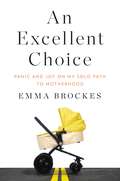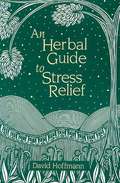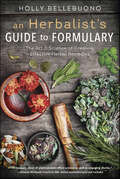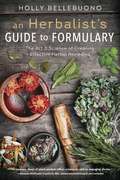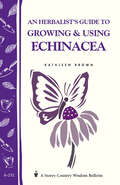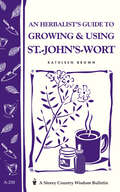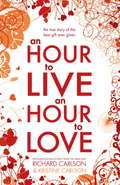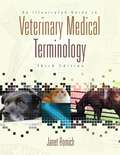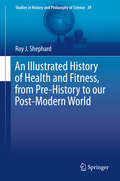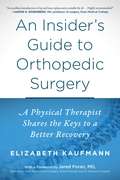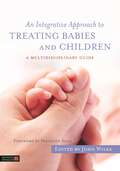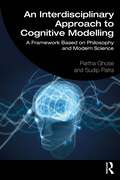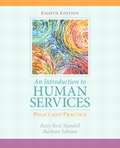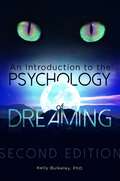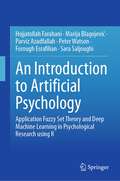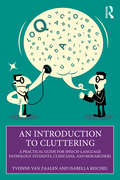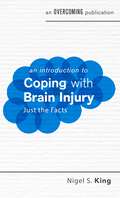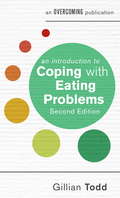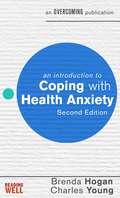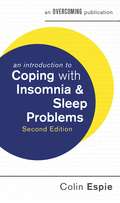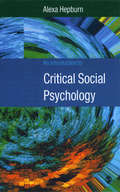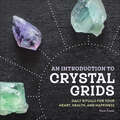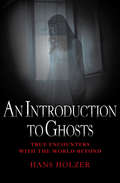- Table View
- List View
An Excellent Choice: Panic and Joy on My Solo Path to Motherhood
by Emma BrockesFrom the author of She Left Me The Gun, an explosive and hilarious memoir about the exceptional and life-changing decision to conceive a child on one's own via assisted reproduction When British journalist, memoirist, and New York-transplant Emma Brockes decides to become pregnant, she quickly realizes that, being single, 37, and in the early stages of a same-sex relationship, she's going to have to be untraditional about it. From the moment she decides to stop "futzing" around, have her eggs counted, and "get cracking"; through multiple trials of IUI, which she is intrigued to learn can be purchased in bulk packages, just like Costco; to the births of her twins, which her girlfriend gamely documents with her iPhone and selfie-stick, Brockes is never any less than bluntly and bracingly honest about her extraordinary journey to motherhood. She quizzes her friends on the pros and cons of personally knowing one's sperm donor, grapples with esoteric medical jargon and the existential brain-melt of flipping through donor catalogues and conjures with the politics of her Libertarian OB/GYN—all the while exploring the cultural circumstances and choices that have brought her to this point. Brockes writes with charming self-effacing humor about being a British woman undergoing fertility treatment in the US, poking fun at the starkly different attitude of Americans. Anxious that biological children might not be possible, she wonders, should she resent society for how it regards and treats women who try and fail to have children? Brockes deftly uses her own story to examine how and why an increasing number of women are using fertility treatments in order to become parents—and are doing it solo. Bringing the reader every step of the way with mordant wit and remarkable candor, Brockes shares the frustrations, embarrassments, surprises, and, finally, joys of her momentous and excellent choice.From the Hardcover edition.
An Herbal Guide to Stress Relief: Gentle Remedies and Techniques for Healing and Calming the Nervous System
by David HoffmannDavid Hoffmann, widely respected herbalist and author of Medical Herbalism, looks at stress and anxiety from a holistic perspective and shows how a wide variety of natural treatments can be used in alleviating the physical and mental problems caused by the stress of modern living. He also offers advice on the use of herbs in recovery from chemical dependencies and provides a therapeutic index dealing with stress-related diseases.
An Herbalist's Guide to Formulary: The Art & Science of Creating Effective Herbal Remedies
by Holly BellebuonoExplore the ancient art of formulary with award-winning herbalist Holly Bellebuono's comprehensive guide to creating effective herbal medicine. Organized by body systems, An Herbalist's Guide to Formulary shows how to design a holistic treatment for acute and chronic conditions.Packed with detailed information on more than one hundred plants, An Herbalist's Guide to Formulary is the go-to reference for formulary. Holly presents her 4-tier formula structure, a commonsense way to integrate a wide range of herbal actions while keeping the formula simple. She also shares the history of healing traditions as well as personal and clinical examples that illustrate the art of combining plants for illnesses, preventative care, and overall wellness. With this book's guidance, healing-arts practitioners can turn formulary into a rewarding and practical skill.Praise:"Holly has blended the richness of the Western herbal tradition with the transformative insights of modern holistic medicine. This book is a cornucopia of herbal insights."—David Hoffmann, BS, FNIMH, medical herbalist
An Herbalist's Guide to Formulary: The Art and Science of Creating Effective Herbal Remedies
by Holly BellebuonoExplore the ancient art of formulary with award-winning herbalist Holly Bellebuono's comprehensive guide to creating effective herbal medicine. Organized by body systems, An Herbalist's Guide to Formulary shows how to design a holistic treatment for acute and chronic conditions.
An Herbalist's Guide to Growing & Using Echinacea: A Storey Country Wisdom Bulletin (Storey Country Wisdom Bulletin Ser.)
by Kathleen BrownSince 1973, Storey's Country Wisdom Bulletins have offered practical, hands-on instructions designed to help readers master dozens of country living skills quickly and easily. There are now more than 170 titles in this series, and their remarkable popularity reflects the common desire of country and city dwellers alike to cultivate personal independence in everyday life.
An Herbalist's Guide to Growing & Using St.-John's-Wort: Storey Country Wisdom Bulletin A-230 (Storey Country Wisdom Bulletin Ser.)
by Kathleen BrownSince 1973, Storey's Country Wisdom Bulletins have offered practical, hands-on instructions designed to help readers master dozens of country living skills quickly and easily. <P><P>There are now more than 170 titles in this series, and their remarkable popularity reflects the common desire of country and city dwellers alike to cultivate personal independence in everyday life.
An Hour to Live, an Hour to Love
by Richard Carlson Kristine CarlsonIf you had one hour to live and could make just one phone call, who would you call? What would you say?Why are you waiting?Richard Carlson's sudden, tragic death in December 2006 left his millions of fans reeling, but even their many letters, calls, and emails couldn't erase the loss felt by his wife Kristine.To try and come to terms with her loss, she pored over 25 years of love letters, reliving the memories and cherishing her late husband's memory.But one letter stood out. Richard had written to his wife on their 18th wedding anniversary and attempted to answer the question: if you had one hour to live, what would you do, who would you call, and what would you say?AN HOUR TO LOVE is a profoundly moving book that shows the importance of treasuring each day as the incredible gift it is.
An Illustrated Guide to Veterinary Medical Terminology (3rd edition)
by Janet Amundson RomichA systematic approach to breaking down the parts of medical terms is used, allowing readers to grasp basic medical concepts and apply critical thinking skills when faced with new and unfamiliar medical terminology.
An Illustrated History of Health and Fitness, from Pre-History to our Post-Modern World (Studies in History and Philosophy of Science #39)
by Roy J. ShephardThis book examines the health/fitness interaction in an historical context. Beginning in primitive hunter-gatherer communities, where survival required adequate physical activity, it goes on to consider changes in health and physical activity at subsequent stages in the evolution of "civilization. " It focuses on the health impacts of a growing understanding of medicine and physiology, and the emergence of a middle-class with the time and money to choose between active and passive leisure pursuits. The book reflects on urbanization and industrialization in relation to the need for public health measures, and the ever-diminishing physical demands of the work-place. It then evaluates the attitudes of prelates, politicians, philosophers and teachers at each stage of the process. Finally, the book explores professional and governmental initiatives to increase public involvement in active leisure through various school, worksite, recreational and sports programmes.
An Insider's Guide to Orthopedic Surgery: A Physical Therapist Shares the Keys to a Better Recovery
by Elizabeth Kaufmann Jared ForanNearly two million Americans undergo elective orthopedic surgery each year. And the numbers keep growing—hip replacements are projected to double over the next fifteen years, and knee replacements will quadruple. When you are ready for your procedure, you’ll want a copy of An Insider’s Guide to Orthopedic Surgery at your side. It is the only book that will help you prepare yourself (and your home) for a quicker and more thorough recovery. As a physical therapist who has spent more than seventeen years helping patients through recovery, author Elizabeth Kaufmann discusses the things that your surgeon won’t cover. You’ll get detailed, practical instruction on: • Preparing your home for the equipment you’ll need upon return • Understanding what will happen at every step of your hospital stay, from arrival through surgery to release (which will likely be sooner than you expect) • Getting the best care from therapists and other hospital and rehab staff members • Dealing with pain throughout the healing process • Building a support network to help provide care during recovery You’ll also learn the difference between a physical therapist and an occupational therapist; be ready for that first session; and find out the advantages of home therapy, sub-acute rehab, and outpatient therapy. If you have been suffering from chronic pain in the shoulder, knee, or hip, joint replacement can offer a second chance at restoring the life you desire. An Insider’s Guide to Orthopedic Surgery will help you get ready for it.
An Integrative Approach to Treating Babies and Children: A Multidisciplinary Guide
by Michael Shea Franklyn Sills Ann Diamond Weinstein John Wilks Anita Hegerty David Haas Dr Carolyn Goh Graham Kennedy Matthew Appleton Professor Franz Ruppert Thomas HarmsWorking with babies and children is most successful when therapists have a complete understanding and overview of all appropriate treatment options, and the effects of early influences on child health and development. This book shows therapists how to consider these factors in order to work more effectively within their individual areas of expertise. Contributors from a wide range of disciplines explore the influence of pregnancy, birth and family dynamics on the physical and mental health of babies and children. They show how these factors relate to common complaints, such as excessive and different types of crying, chronic illnesses and poor immune systems, and behavioural and attachment issues, and how complementary approaches can be best applied to treat these issues. This book also offers helpful advice for working within multidisciplinary teams. Illustrated with case studies and including examples from current research, this book is a valuable resource for therapists from diverse disciplines.
An Interdisciplinary Approach to Cognitive Modelling: A Framework Based on Philosophy and Modern Science
by Partha Ghose Sudip PatraAn Interdisciplinary Approach to Cognitive Modelling presents a new approach to cognition that challenges long-held views. It systematically develops a broad-based framework to model cognition, which is mathematically equivalent to the emerging ‘quantum-like modelling’ of the human mind. The book argues that a satisfactory physical and philosophical basis of such an approach is missing, a particular issue being the application of quantization to the mind for which there is no empirical evidence as yet. In response to this issue, the book adopts a COM (classical optical modelling) approach, broad-based but mathematically equivalent to quantum-like modelling while avoiding its problematic features. It presents a philosophically informed and empirically motivated mathematical model of cognition, mainly concerning decision-making processes. It also deals with applications to different areas of the social sciences. It will be of interest to scholars and research students interested in the mathematical modelling of cognition and decision-making, and also interdisciplinary researchers interested in broader issues of cognition.
An Introduction To Human Services: Policy And Practice
by Barbara Schram Betty Reid MandellComplete, up-to-date coverage of social welfare programs and policies with special coverage of how history, politics, and the economy shape these programs This text puts the field of human services into a historical context, provides insights into the social welfare field, and gives concrete examples of how primary intervention strategies are put into daily practice in human service agencies. <P> It presents the many options offered in the field of human services and discusses the stresses that a human service worker will face in day-to-day work, with practical suggestions for avoiding burnout. The text compares the U. S. social welfare systems to systems in other countries, and uses a strong multicultural and social systems approach that distinguishes it from other texts.
An Introduction To The Psychology Of Dreaming, 2nd Edition
by Kelly BulkeleyWhy do people dream, and what do dreams mean? What do the most recent neuroscientific research and studies of patterns in dream content reveal about the functionality of dreams? How do the ideas of earlier generations of dream psychologists continue to influence the research of psychologists today? An Introduction to the Psychology of Dreaming covers all major theories in dream psychology from 1900 to the present day. It provides readers with a unique resource that focuses specifically on this lineage of research in dream psychology and is concise and accessibly written. Each chapter of the book analyzes a particular theory of dream psychology in terms of three basic questions: How are dreams formed? What functions do dreams serve? How can dreams be interpreted? By examining each theorist's answers to these questions, readers can clearly see how dream psychology theorists have both incorporated concepts from previous researchers and developed new ideas of their own. A breadth of psychological approaches is considered, from Freud and Jung to contemporary brain studies, giving readers an appreciation of the wide range of theories regarding this fascinating area of study.
An Introduction to Artificial Psychology: Application Fuzzy Set Theory and Deep Machine Learning in Psychological Research using R
by Peter Watson Sara Saljoughi Hojjatollah Farahani Marija Blagojević Parviz Azadfallah Forough EsrafilianArtificial Psychology (AP) is a highly multidisciplinary field of study in psychology. AP tries to solve problems which occur when psychologists do research and need a robust analysis method. Conventional statistical approaches have deep rooted limitations. These approaches are excellent on paper but often fail to model the real world. Mind researchers have been trying to overcome this by simplifying the models being studied. This stance has not received much practical attention recently. Promoting and improving artificial intelligence helps mind researchers to find a holistic model of mental models. This development achieves this goal by using multiple perspectives and multiple data sets together with interactive, and realistic models. In this book, the methodology of approximate inference in psychological research from a theoretical and practical perspective has been considered. Quantitative variable-oriented methodology and qualitative case-oriented methods are both used to explain the set-oriented methodology and this book combines the precision of quantitative methods with information from qualitative methods. This is a book that many researchers can use to expand and deepen their psychological research and is a book which can be useful to postgraduate students. The reader does not need an in-depth knowledge of mathematics or statistics because statistical and mathematical intuitions are key here and they will be learned through practice. What is important is to understand and use the new application of the methods for finding new, dynamic and realistic interpretations. This book incorporates theoretical fuzzy inference and deep machine learning algorithms in practice. This is the kind of book that we wished we had had when we were students. This book covers at least some of the most important issues in mind research including uncertainty, fuzziness, continuity, complexity and high dimensionality which are inherent to mind data. These are elements of artificial psychology. This book implements models using R software.
An Introduction to Cluttering: A Practical Guide for Speech-Language Pathology Students, Clinicians, and Researchers
by Yvonne van Zaalen Isabella ReichelAn Introduction to Cluttering explores the speech disorder of cluttering, offering concrete, evidence-based methods for its diagnosis and treatment.Cluttering is a globally recognized communication disorder, yet it is often poorly understood. This book presents a historical overview of the efforts of pioneers in the field to demystify the cluttering disorder, before introducing the aetiology and symptoms of cluttering from several perspectives: physiological, psycho-linguistic, neurological, social, affective, and cognitive. It also provides an in-depth discussion of the identification, differential diagnosis, and assessment of cluttering, using current and advanced diagnostic procedures before explaining the rationales and unique, innovative procedures for evidence-based treatments of cluttering. Engaging practical examples and theory boxes are featured throughout the book.Providing effective and user-friendly procedures for cluttering diagnosis and intervention, this book is an essential read for all current and future speech and language therapists.
An Introduction to Coping with Brain Injury (An Introduction to Coping series)
by Nigel S. KingJust the facts for coping with the after-effects of a brain injuryAcquired Brain Injury (ABI) usually refers to people who have suffered a head injury or stroke but also includes those who have had brain tumours, an anoxic injury (where the brain has been starved of oxygen) or brain illnesses like encephalitis and meningitis. After an ABI, the brain undergoes a very slow healing process before improvements slow down and eventually plateau. This is different to other forms of brain conditions where the journey is more of a deteriorating one over time.ABI is commonly called 'a hidden disability' as it can easily be missed or misunderstood by others. Also it can significantly affect those close to the person and therefore it is frequently called 'a family affair' too. As the issues are often hidden, complicated and affect patients and families alike, this book can act as a roadmap to help you and your loved ones navigate through the complex and often unexpected challenges that can arise following a brain injury, using:- Cognitive rehabilitation approaches to understand and manage changes in our thinking abilities- Cognitive behavioural approaches to address ways in which our thoughts, feelings, actions and physical reactions relate to each other
An Introduction to Coping with Brain Injury (An Introduction to Coping series)
by Nigel S. KingJust the facts for coping with the after-effects of a brain injuryAcquired Brain Injury (ABI) usually refers to people who have suffered a head injury or stroke but also includes those who have had brain tumours, an anoxic injury (where the brain has been starved of oxygen) or brain illnesses like encephalitis and meningitis. After an ABI, the brain undergoes a very slow healing process before improvements slow down and eventually plateau. This is different to other forms of brain conditions where the journey is more of a deteriorating one over time.ABI is commonly called 'a hidden disability' as it can easily be missed or misunderstood by others. Also it can significantly affect those close to the person and therefore it is frequently called 'a family affair' too. As the issues are often hidden, complicated and affect patients and families alike, this book can act as a roadmap to help you and your loved ones navigate through the complex and often unexpected challenges that can arise following a brain injury, using:- Cognitive rehabilitation approaches to understand and manage changes in our thinking abilities- Cognitive behavioural approaches to address ways in which our thoughts, feelings, actions and physical reactions relate to each other
An Introduction to Coping with Eating Problems, 2nd Edition (An Introduction to Coping series)
by Gillian ToddEating problems, including anorexia nervosa and bulimia nervosa, can have a devastating impact on sufferers as well as their friends and family. This self-help guide is written by a consultant psychotherapist with extensive experience of treating eating disorders and will help you identify an eating disorder and develop a toolkit of strategies to help you take steps towards overcoming the disorder. It also includes a chapter offering useful guidance for family members.This updated second edition will help you:· Understand how eating disorders develop and what keeps them going· Find the motivation to change · Change how you eat· Challenge negative thinkingThe Introduction to Coping series offers valuable guidance for those seeking help for emotional or psychological problems such as depression and anxiety. Each book gives useful background information and suggests techniques to change unhelpful patterns of behaviour and thinking using cognitive behavioural therapy (CBT) techniques. CBT is recommended internationally to treat a wide range of emotional, psychological and physical conditions including eating disorders.
An Introduction to Coping with Health Anxiety, 2nd edition (An Introduction to Coping series)
by Brenda Hogan prof Charles YoungLearn how to control your health anxietyHealth anxiety affects many people across the world - a preoccupation with physical illness that is equally bad for your mental health. This can be worsened in times of global panic about pandemics. This self-help guide explains how health anxiety develops and what keeps it going. This updated edition gives you clinically proven cognitive behavioural therapy (CBT) techniques to help you challenge the way you think and behave, such as:- What health anxiety is and how it develops - Physical symptom - How to spot and challenge thoughts that make you anxious. - Reducing your focus on illness- How to spot and challenge thoughts that make you anxious- Reducing your focus on your body and on illness
An Introduction to Coping with Insomnia and Sleep Problems (An Introduction To Coping Ser.)
by Colin EspiePoor sleep can have a huge impact on our health and wellbeing, leaving us feeling run-down, exhausted and stressed out. This self-help guide explains the causes of insomnia and why it is so difficult to break bad habits. This updated edition gives you clinically proven cognitive behavioural therapy (CBT) techniques for improving the quality of your sleep.
An Introduction to Coping with Insomnia and Sleep Problems, 2nd Edition (An Introduction to Coping series)
by Colin EspiePoor sleep can have a huge impact on our health and wellbeing, leaving us feeling run-down, exhausted and stressed out. This self-help guide explains the causes of insomnia and why it is so difficult to break bad habits. This updated edition gives you clinically proven cognitive behavioural therapy (CBT) techniques for improving the quality of your sleep:· Keeping a sleep diary· Setting personal goals· Improving your sleep hygiene· Dealing with a racing mind· Making lasting improvements to your sleeping and waking pattern
An Introduction to Critical Social Psychology
by Dr Alexa Hepburn'this book provides an excellent introduction to contemporary Critical Social Psychology, which anyone exploring the field would do well to read.' - Psychology in Society 'a very accessible introduction... lively and engaging.... Discussion questions are uncharacteristicaly thought-provoking, while practical exercises also seem better considered than one comes to expect from similar primers, suggesting a successful future as a core text in social psychology courses' - The Psychologist 'Erudition, sagacity, patience and scholarship radiate from this book. This is an excellent introduction to the various strands of critical thinking to emanate primarily from England, and, to some extent, from continental Europe. Anyone interested in learning more about the discursive side of critical psychology will find in this book an excellent guide. I recommend this book to all psychologists interested in critical perspectives' - Journal of Community and Applied Psychology A critical approach depends on a range of often-implicit theories of society, knowledge, as well as the subject. This book shows the crucial role of these theories for directing critique at different parts of society, suggesting alternative ways of doing research, and effecting social change. It includes chapters from the perspectives of social cognition, Marxism, psychoanalysis, discourse and rhetoric, feminism, subjectivity and postmodernism. In each case, the strengths and weaknesses of each perspective are highlighted, the ideas are linked to real world issues by a range of practical exercises, and guidance is given to further reading.These chapters will cover the work of diverse thinkers from within social psychology, such as Billig, Gergen, Kitzinger, Parker, Potter, Shotter, Walkerdine and Wetherell, and from outside, such as Butler, Derrida, Foucault, Haraway, Lyotard, Marx and Rose. An Introduction to Critical Social Psychology provides a systematic, integrated and accessible introduction to social psychology as a critical discipline. Consequently, it will be key reading for undergraduates and postgraduates studying Critical Social Psychology, and useful additional reading for postgraduates studying theoretical psychology and qualitative methods.
An Introduction to Crystal Grids: Daily Rituals for Your Heart, Health, and Happiness
by Karen FrazierHealing the mind, body, and sacred spirit—a beginner's guide to the power of crystal grids.A small symphony of crystals energized in complete harmony—that's a crystal grid. A single gemstone sets the tone. Add more crystals and sacred geometry brings shape and structure to amplify and harness the ultimate power of your grid. An Introduction to Crystal Grids is the perfect guide for beginners to manifest your intentions and get on the path to positive energy, healing, and wellness.Start your gemstone journey with powerful crystals—then build your skills grid-by-grid so that the collective crystal energy can deliver the change you desire. From the simplest shape (a single circle) to the most complex configuration (flower of life), An Introduction to Crystal Grids gives you the insights and information to achieve your desired manifestation—from aura cleansing to cultivating a work ethic.This essential handbook on crafting crystal grids includes:Get crystal clear—Discover 25 essential crystals—from amber to turquoise—and their healing properties in this quick crystal grids reference guide.Sacred shapes—Explore fundamental forms, sacred geometry, and 15 basic grid shapes like a spiral, a sunburst, a triangle, and beyond.Manifest positivity—Build crystal grids step-by-step that enrich the five modes of life—health, spirituality, career, relationships, and learning.Learn how to release the awesome healing power of crystals grids in your everyday life.
An Introduction to Ghosts: True Encounters With The World Beyond (True Encounters with the World Beyond #7)
by Hans HolzerJoin paranormal expert and storyteller extraordinaire Hans Holzer as he explores ghostly manifestations of every variety and delves into the true nature of the &“other side&”In this groundbreaking work, professor Hans Holzer provides a thorough introduction to the art and science of successful and lucid communication with the world beyond. Here he delves into the nature of life and death, shares invaluable information that every would-be ghost hunter should know, and explains the exact nature of what we understand to be a &“ghost.&”
